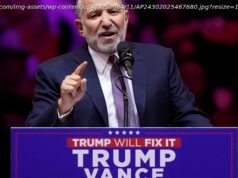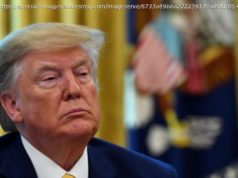In that first year, it found it could sell a certificate, not the actual toys
CINCINNATI — He had one thing on his Christmas wish list.
Star Wars. Star Wars “anything,” to be exact.
And on the morning of Dec. 25,1977, Matthew Fox unwrapped more than what he wanted. He got Star Wars everything. Forty years ago, a Star Wars Christmas mostly meant jigsaw puzzles and a board game. But there was one other thing under Matthew’s tree that year.
It was an envelope, the size of a typical board game, emblazoned with these words in technicolor: “Early Bird Certificate Package.”
It was an IOU from Kenner’s headquarters in Cincinnati –- printed half a million times over or so -– that once the company’s Star Wars toys were ready, a tiny, plastic Chewbacca, Luke, Princess Leia and a robot called “Artoo-Detoo” would arrive in your mailbox, before anybody else on the block.
It was something. But what?
For A 6-year-old like Matthew, the early bird certificate was just a piece of paper — one he couldn’t play with.
For the top brass at Kenner, however, that early bird certificate was the only thing they could conceive in time for Christmas ’77, which fell – to the day – seven months after some space opera called Star Wars debuted.
Christmas ’77 also came just about eight months after Kenner president Bernie Loomis shook hands with an up-and-coming director named George Lucas and bought the rights to make what would soon – and still – be one of the most successful toy lines of all time.
That success, however, came way too soon and almost no one, not even Lucas, saw it coming. Even today, a few months is not enough time to design and manufacturer new toys.
So Kenner folks did something daring. Unheard of. Now, it almost seems unthinkable.
It sold a promise.
Here’s the strangest thing of all: The certificate, that gutsy gamble, paid off big time, elevating Kenner, the people who worked there and the city they all called home.
Maybe it was luck. Maybe it was moxie. Maybe it was the right place, right people, right time. Maybe it was that toymakers knew people and how they play better than anybody else on the planet back then.
But one thing is certain. Forty years and eight Star Wars films later, that idea is still working.
This early bird certificate was actually just a gamble within a gamble, one little risk within the great big risk that was Star Wars. But the Kenner people saw something that no one else in their industry did.
They almost didn’t get the chance. See, there is a reason they didn’t secure the licensing rights for Star Wars until the month before the sci-fi flick hit the silver screen. They were the very last company director George Lucas and distributor 20th Century Fox approached.
Top toymakers like Mattel passed. Politely. “It was greeted with a seated ovation,” joked Pete Kelly, head of sales for Kenner at the time.
It’s said that the Mego representative literally pushed the Star Wars folks out the door at Toy Fair in New York City that February. This Star Wars idea was that crazy.
Still determined – or just plain desperate for extra financing – the filmmakers tracked down Kenner’s Craig Stokely at that NYC industry showcase.
Stokely agreed to catch an across-town cab to check out a trailer for a new movie coming out that might have a toy potential. Even though no movie as of that date had proven real toy potential.
Companies much bigger than Kenner had tried products inspired by the Dr. Doolittle and Chitty Bang movies. The films did fine, the toys not so much.
Most movies came and went pretty quickly, with typical theater runs of 10 weeks for only the big hits, which in 1976 were Rocky, All the Presidents Men and A Star Is Born. Home entertainment systems were years away from appearing in most people’s homes. Betamax hadn’t even come out in the U. S. yet.
Television, however, meant almost guaranteed money. With products imitating the shows and cartoons that played every week, year after year, in America’s living rooms, these TV toys advertised themselves.
Kenner knew that better than most. Its line based on the hit action TV series The Six Million Dollar Man was pretty much paying the bills.
But in February 1977, it took Stokely just a couple of minutes in that NYC office to believe that Star Wars could break the mold.
This could reinvent the rules.
He only watched the trailer, but that was enough time to see the robots and the vehicles. He didn’t know the plot or the point. But he saw toys in every scene, in every second.
His boss, Bernie Loomis, coined a term for this: Toyetic.
Stokley’s first stop when he returned to Cincinnati would have to be Loomis’ office.
The right stuff
Loomis next had to go to California to secure that partnership with Lucas.
Pete Kelly later heard that meeting went something like this: Lucas only shared the story. No script. It was basically Cowboys and Indians in space, Kelly said. Big block drawings hung in the California office. There was Darth Vader. There was R2D2.
The group eventually negotiated the terms. The advance against all the royalties was $25,000. The royalty guarantee was $125,000 and the royalty rate was 5 percent. (When these terms were re-negotiated in the early 2000s, toymakers had to pay more than $300 million upfront. And today, Star Wars toys and merchandise are valued at $17 billion.)
In a couple months, after Star Wars hit the theater, that agreement became also the deal of the century for Kenner.
Star Wars wasn’t a movie. It was a phenomenon.
The Awakening
Steve Sansweet thinks he knows why the movie “awakened something” in millions. He’s the chairman and president of Rancho Obi-Wan, a museum of the world’s largest collection of Star Wars memorabilia.
“This was the era of Vietnam,” he said. “It was a dark era. The movies were dark. George Lucas wanted to do a movie for kids that had heroes in it. There hadn’t been many movies for kids or pitched to kids with heroes since the westerns of the ’50s.”
Cincinnati was one of the first 32 cities to see the first film on its release May 25,1977. Unlike in the other cities, Cincinnati actually screened the saga before the rest of the world. And only the Kenner employees were invited.
Mark Boudreaux was there. A Cincinnati kid, he was then an intern at Kenner. And from the moment the star destroyer flew over his head on that big screen, his life was changed. The University of Cincinnati student just didn’t know it yet.
The next year, he would be one of the lead designers on the Millennium Falcon, the “piece of junk” ship that still soars in Star Wars: The Last Jedi. Today, a decade and a half after Hasbro acquired Kenner, Boudreaux is the senior principal designer at Hasbro, still making Millennium Falcons.
Toy Story
Forty years ago, Boudreaux and his Kenner coworkers left that early Star Wars preview buzzing with a jumbled up mix of excitement and anxiety.
Why would their company even license a movie that was just months away from Christmas, the biggest sales time of the year?
Kenner could pull off those puzzles and that game, the easier to produce two-dimensional stuff.






